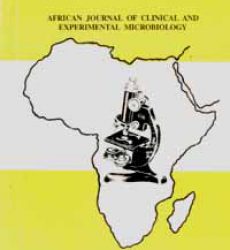Abstract
Vaginal candidiasis (VC) is second to bacterial vaginitis, as the most common opportunistic mucosal infection that affects large numbers of otherwise healthy women of childbearing age. The incidence of VC is significantly modified by dressing patterns and aberrant health-care practices. Contemporary young women often shift their preference from skirt to trousers and leggingswhich also coincides with a rise in auto-medication and over-the-counter drugs phenomena in our communities. These could result in increased occurrence of vaginal candidiasis infection and antifungal drug resistance. This was a cross-sectional study conducted between March 2011 and August 2011 among150 female students(aged 17-29 years) of the University of Buea. Socio-demographics information, risk factors and clinical symptoms were gotten through a standard questionnaire. Vaginal swabs were collected from each participant and cultured on Sabouraud’sdextrose agar supplemented with chloramphenicol (SDA-CAF). Identification and antifungal susceptibility testing was performed following standard microbiological procedures. Of the 150 participants who submitted vaginal swabs, yeasts was isolated in 98 (65.3%). Of the 98 yeasts isolates, 73.5% were Candida species, mainly C. albicans (65.3%). Overhalf (64.7%) ofstudyparticipantshadapreferencefortrousers,however, this attitude was not significantly associated (p = 0.559) with candidiasis.Previous episodes of vaginal infection and treatment for candidiasis were significantly associated with VC (p = 0.004). Antifungal susceptibility results showed a high resistance to fluconazole (82.0%), nystatin (80.0%) and ketoconazole (72.0%), while clotrimazole (50.0%) was the most activeantifungal drug. There was a high prevalence of VC in this study population with previous vaginal infectionbeing important risk factor for reoccurrence. Clotrimazole was the drug of choice in the treatment of VC in this population.
Key words: vaginal candidiasis, risk factors, antifungal susceptibility profiles
French Abstract
La candidose vaginale (CV) est la deuxième infection opportuniste de la muqueuse la plus fréquente (après la vaginite bactérienne) qui affecte un grand nombre de femmes en âge de procréer. L’incidence de la CV est affectée de façon significative par certaines habitudes vestimentaires et pratiques de soins de santé « aberrante »s. Chez les jeunes femmes contemporaines, les pantalons et leggings sont de plus en plus préférés aux jupes, ce qui coïncide aussi avec une augmentation du phénomène d’automédication dans nos communautés. Ces deux facteurs pourraient entraîner une augmentation de la prévalence de l’infection à Candida vaginale et la résistance aux antifongiques. La présente étude transversale a été menée entre Mars et Août 2011 portait sur 150 étudiantes âgées de 17 à 29 ans, à l’Université de Buea (Cameroun). Elle avait pour objectifs majeurs d’évaluer les profils de sensibilité aux antifongiques ainsi que les facteurs de risque de candidose vaginale chez les étudiantes universitaires. Les données sociodémographiques, informations sur les facteurs de risque et les symptômes cliniques ont été explores à l’aide d’un questionnaire semi-structuré. Des spécimens vaginaux ont été prélevés dans chaque participante et soumis à une culture sur le dextrose gélose de Sabouraud supplémenté par le chloramphénicol (SDA-CAF). Les tests d’identification et de sensibilité antifongique ont été réalisés suivant des procédures microbiologiques standard. Parmi les 150 participants qui ont soumis des prélèvements vaginaux, des levures ont été isolées de 98 personnes (65,3%). Sur les 98 levures isolées, 73,5% étaient des espèces de Candida, principalement C. albicans(65,3%). Plus de la moitié des participants (64.7%) ont exprimé des préférences pour les pantalons et autres styles vestimentaires émergents. Cependant, de telles attitudes n’ont pas paru statistiquement associées à l’occurrence des candidoses au sein de la population ciblée (p = 0.559). Des précédents épisodes d’infection vaginale et le traitement de la candidose reportés par les participantes étaient significativement associés à CV (p = 0,004). Les résultats de sensibilité antifongiques ont montré une grande résistance au Fluconazole (82,0%), Nystatine (80,0%) et Kétoconazole (72,0%), tandis que le Clotrimazole (50,0%) était le médicament antifongique le plus actif. Il y avait une forte prévalence de CV dans cette population d’étude avec infection vaginale précédente étant facteur de risque important pour la répétition. Le Clotrimazole s’est avéré comme étant le médicament de choix dans le traitement des CV dans cette population, malgré la forte résistance.
Mots clés: Candidose Vaginale, facteurs de risque, les profils de sensibilité aux antifongiques
Download full journal in PDF below

